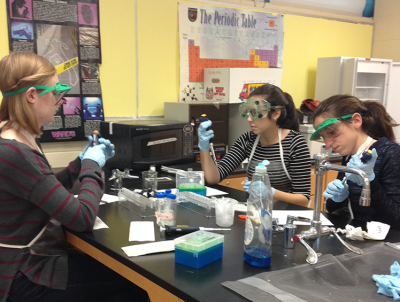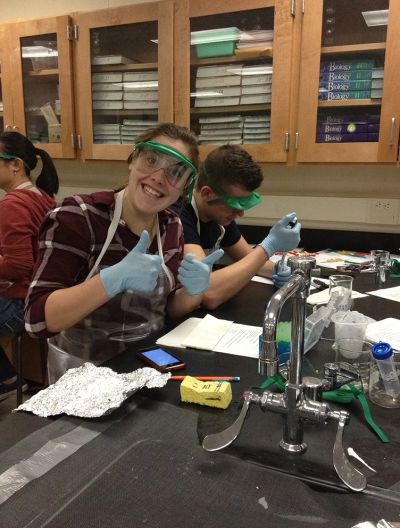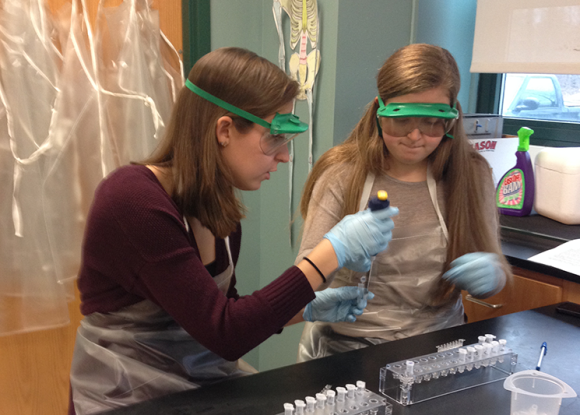Boston Latin School is the first public school in the United States, opening its doors in 1635 – a time before the great biology revolution of the mid-19th century that would forever change our view of human health. Now located on Avenue Louis Pasteur – whose namesake sparked that early revolution – the school sits in one of the centers of the biotech world. And there, one teacher has been quietly making her mark for the past 2 years, introducing students to valuable hands-on lab experiences in biotechnology.
Amgen Biotech Experience (ABE) teacher Gina Castellanos is excited every day to teach biology in the Boston area. “There are so many opportunities for students to job shadow, visit, or intern at a biotech company or local hospital,” she explains. “There are an equal number of opportunities for teachers as well, from training to equipment grants – so much so that all students in Massachusetts should be engaging in biotechnology techniques in their classroom.”

Castellanos began her own journey into the biosciences as a graduate student in cancer pharmacology. But she felt a calling toward teaching and spent some time through AmeriCorps working in an inner-city charter school in Buffalo, New York. “I enjoyed it so much, I left my graduate program, left Buffalo, and never looked back,” she says. She began teaching in Boston, starting a biotechnology course at Haverhill High with the help of MassBioEd and ABE, and then moved to Boston Latin School, where she teaches juniors and seniors biology. She participated in ABE training at Harvard University in 2013.
Though the student body at Boston Latin School is diverse and multitalented, many of the students attracted to Castellanos’ classes come in already interested in medicine or STEM fields. “They are acutely aware of the opportunities in STEM in their backyard,” she says.
This past year, Castellanos says, her students were particularly competitive, and as they moved through the labs, from pipetting to gel electrophoresis, she saw something change. “My normally self-assured students were terrified to make a mistake,” she says. “I calmed everyone down and explained that science was about making mistakes and learning from them, and let them know I had already made every mistake they were about to make. They relaxed and continued on.”

That’s the beauty of ABE, Castellanos says – showing students how lab work is done in real-world settings, mistakes and all. “It's great to have students take a lab series like ABE from beginning to end, to replicate how it's done in industry. I feel so many labs we do are in isolation of one other, and it’s great to see that ABE shows that one step can depend on another. It's a much more realistic view of science.”
Having the support of ABE to equip and facilitate hand-on labs in her classroom has been invaluable, she says. “It's tough to create authentic biology labs on the shoestring budget that most public schools have. ABE allows for the college and career-readiness that Amgen and other biotech companies want to see in their new employees.”
